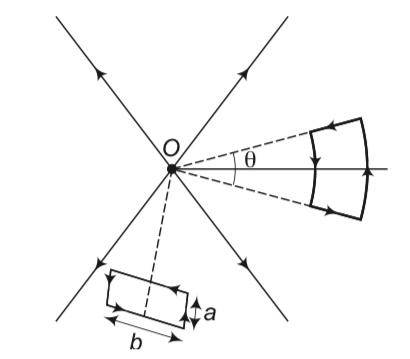A test charge q is made to move in the electric field of a point charge Q along two different closed paths [figure first path has sections along and perpendicular to lines of electric field]. Second path is a rectangular loop of the same area as the first loop. How does the work done compare in the two cases?
A test charge q is made to move in the electric field of a point charge Q along two different closed paths [figure first path has sections along and perpendicular to lines of electric field]. Second path is a rectangular loop of the same area as the first loop. How does the work done compare in the two cases?
-
1 Answer
-
This is a short answer type question as classified in NCERT Exemplar

As the electric field and force both are conservative so work done in conservative body as the body is closed is zero.
Similar Questions for you
This chapter covers the concepts of potential, capacitors, and potential energy. It is considered as one of the easy chapter of the class 12 Physics.
It is the farad (F). The name came from Michael Faraday. SI Unit of Capacitance means the ability of a system to store an electric charge. One farad is the capacitance of a device that needs one coulomb of charge to provide one volt potential difference across it. Mathematically, it is represented by - 1 Farad = 1 Coulomb/Volt.
In JEE Main Physics, electric potential and capacitance chapter has a weightage of 3% to 6%. You can expect around 1 or 2 questions from this chapter which carries 4 to 8 marks.
In NEET Physics exam, the chapter electric potential and capacitance carries a weightage of 2% to 5%, which means you can expect one question out of 45 questions.
The ability to do work on a charge is called the electric potential and the ability to store charge is termed as the capacitance.
Taking an Exam? Selecting a College?
Get authentic answers from experts, students and alumni that you won't find anywhere else
Sign Up on ShikshaOn Shiksha, get access to
- 65k Colleges
- 1.2k Exams
- 679k Reviews
- 1800k Answers
